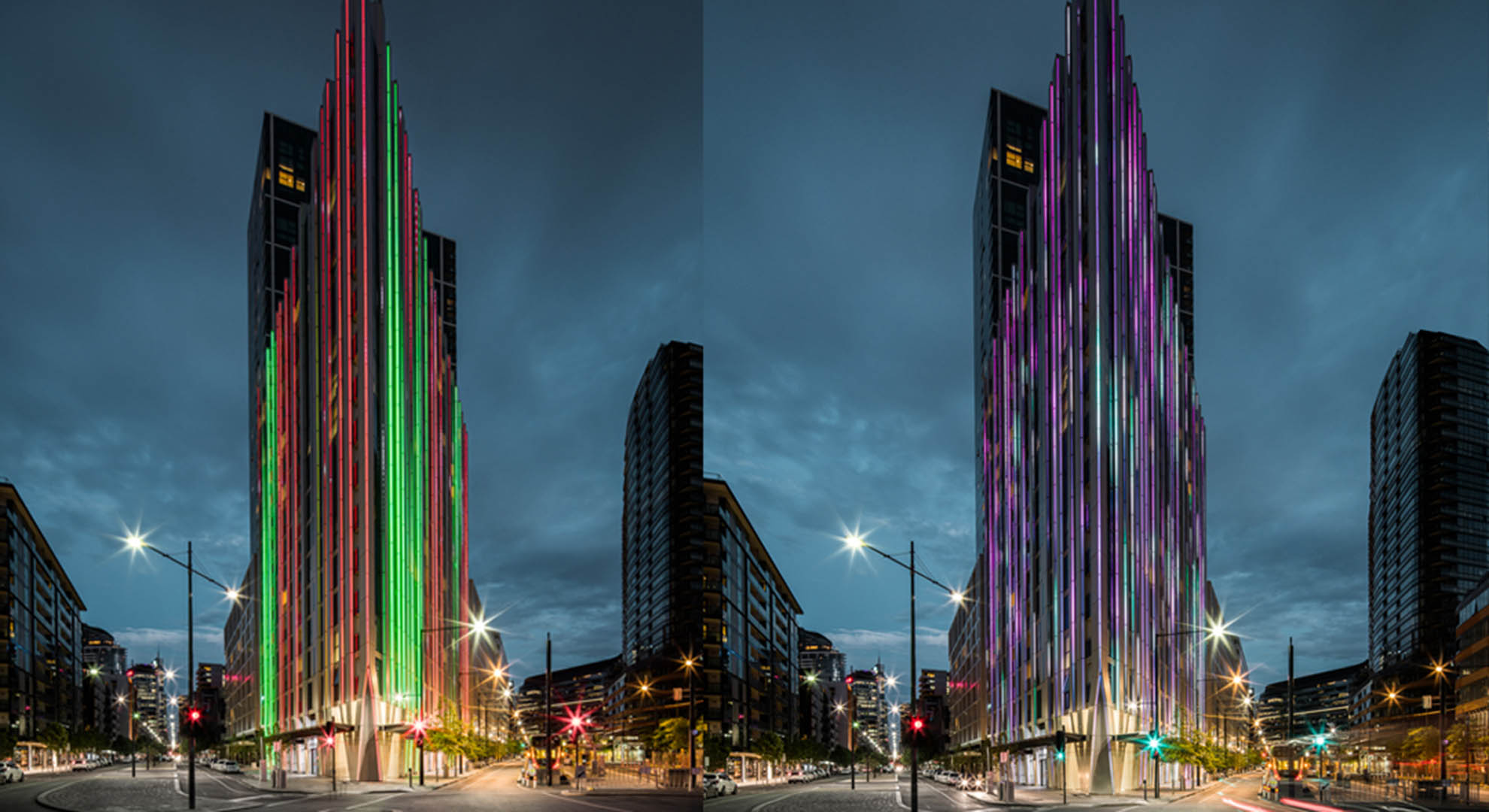The Evolving Consumption of Architecture
Experiencing cities through architecture, from landmark structures to emerging digital for-mats
When Frank Gehry’s Guggenheim Museum opened in Bilbao in 1997, the design cognoscenti suddenly flocked to the hitherto, largely ignored, industrial north at an unprecedented rate. Clad in petals of light-shifting, titanium armour, it allowed the city to completely reinvent itself as a destination worth engaging with. Around the world, other second cities followed suit, building landmark structures of their own with the intention of luring the masses to admire them.
It was a highly effective strategy when it came to making a place more appealing, and the last decade or so has seen increasing numbers of urban planners, architects, designers and artists striving to better integrate their work at a more grassroots level. Zaha Hadid’s glittering, hot-pink, ski jump in Innsbruck, Austria, was designed as a fun run for everyone, not just competitors, while Nader Tehrani’s Helios House—a spectacularly space-age, sustainable structure in Los Angeles—is actually just a workaday ARCOS gas station, albeit one with solar panels and a planted roof. “Ours is a practice about translation and meditation,” he explains in an article in Architect Magazine.
New formats for experiencing architecture
Meanwhile, creatives in the fields of art, music and literature are using existing architecture, from ancient Roman ruins to state-of-the-art airports, as an essential element for enhancing our experience of cultural events. Derek Barbolla, a 29-year old Parisian, began trail-blazing new opportunities in the digital realm when he set up Cercle in 2016—a multimedia group that fuses “timeless” electronic music with landscapes or architecture of cultural or historical interest. Venerated British DJ Fatboy Slim played atop the British Airways i360 observation tower in Brighton; French DJ Møme took over a remote floating village off Tahiti; and South African DJ, Black Coffee, played his set in the historic Salle Wagram auditorium in Paris, which was built in 1865, all to critical acclaim.
Charles Jencks, writing in The Architectural Review in May 2013 described architecture as “frozen music,” and to some extent what Cercle is doing is “unfreezing” it by making these iconic structures and landscapes accessible to all. From the pre-Christian Temple of Garni in Armania and the Intrepid Sea, Air & Space Museum in New York, to the ethereal salt pans of Salar de Ayuni in Bolivia and Sugarloaf Mountain in Rio de Janeiro, the group has one clear goal: to spark a dialogue between the artist, the venue and the audience.
These weekly events are streamed live via Cercle’s YouTube channel every Monday which, Barbolla explains on the Domus website, “allows viewers to ‘visit’ unknown places that are emphasized by a contemporary musical framework that allows new generations through social media to plunge back into the culture.”
Channeling notions of play and nature
As consumers, this helps us engage more sharply and emotionally with buildings and represents a new genre of experimentalism in 21st,-century architecture. In Australia for example, the Melbourne Planning Scheme decided that, with the advance in digital technologies, new buildings could be used more playfully. They teamed with the Met Office to turn the residential Light House into a weather forecaster. Its high-rise facade provides live, meteorological readings from dusk to midnight in a series of light shows that range from the evocative pinks and reds of the sun, to silver raindrops that cascade down the building. Today, it is a key part of the city’s cultural landscape, not just for its striking proportions and advanced technology, but for its social commentary: Melburnian’s are as notorious for obsessing about the weather as the Brits—the Light House makes them smile.

The weather was also the inspiration for British sculptor, Anish Kapoor’s Cloud Gate in Chicago. The pod-like structure, designed to look like liquid mercury, dominates Millennium Park where it provides a new perspective on the windy city’s skyline, and perhaps more importantly the sky above it, as visitors walk under and around it. A reminder, that no matter how urban your environment, nature is omnipresent. And in Shibuya, Tokyo, work is underway on architect Koichi Takada’s vision of a skyscraper as a vertical Zen garden, his goal being to “create places that are more organic and more beneficial to the human experience.”
Being able to connect to the built environment is key in the 21st-century urban landscape. Culture and social interaction are fundamental to our experience of our environment, which in turn impacts our feelings about space and give us a deeper sense of it. Emerging technologies and new ways of thinking that challenge the status quo are allowing both architects, and consumers of architecture, to step into a brave new world of possibilities. It is no longer a passive act to soak up the aesthetic of a structure, but rather a dynamic and inclusive discourse with the power to transcend time and space.
MAIN IMAGE: Brighton DJ Fatboy Slim playing 450 ft above the beach, at the top of the British Airways i360 pod. Photo by Jake Davis (fb.com/hungryvisuals)
